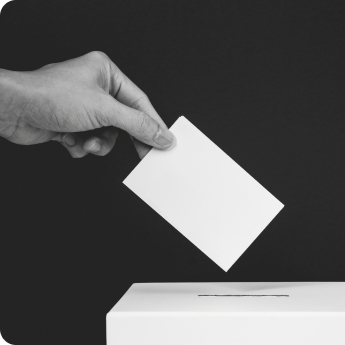Press Releases
TODAY: Admin officials are testifying. We want answers.
This morning, administration officials including Dr. Anthony Fauci, Robert Redfield, Stephen Hahn, and Brett Giroir are testifying for the first time since May 12, even as the coronavirus crisis rages, before the House Energy and Commerce Committee regarding “Oversight Of The Trump Administration’s Response To The COVID-19 Pandemic.”
This kind of oversight is much-needed — even for a historically non-transparent administration, the Trump administration’s COVID-19 response has been marred by a staggering lack of sunlight. In just a few months, Trump has:
- Threatened and fired inspectors general;
- Broken promise after promise to make COVID-19 tests widely accessible, even telling supporters that he intentionally slowed testing to keep case numbers down; and
- Failed to collect data about how minority populations are disproportionately affected by the virus.
Trump and his administration are responsible for botching the U.S.’s pandemic response, and it’s time they finally offer the public some answers. Here are five questions lawmakers should ask the Trump officials testifying today:
1. What is the status of the administration’s commitment to collect COVID-19 data broken down by race so we can understand the impact of the disease on minority communities?
Studies have shown that COVID-19 has been particularly disastrous for those living in majority-Black communities, and that long standing health disparities caused by the federal government’s failure to properly resource these communities are leading to higher fatalities for Black Americans and other people of color. New data shows that among COVID-19 patients with Medicare, Black Americans were hospitalized at almost four times the rate of white Americans. And as NPR reports, “Hispanics were more than twice as likely to be hospitalized as whites, while Asian Americans were about 50% more likely.”
The administration claimed it would collect even more comprehensive data on racial disparities in COVID-19 patients by July 4th. Is it on track to meet this deadline? Will officials commit to releasing the information to the public once it is available?
2. What is the status of the $14 billion the Department of Health and Human Services (HHS) has in store for contract tracing and testing?
The same week Trump claimed to have told officials in his administration to “slow down the testing,” reports revealed that the health department is sitting on a whopping $14 billion intended to go toward COVID-19 testing and contract tracing. From the oft-promised mobile testing sites that never seemed to pop up to the under-resourcing of lower-income communities with testing materials to the botched rollout of testing resources to states, the administration has repeatedly failed to meet its commitments during the crisis to make COVID-19 tests widely available.
Now that we know there’s $14 billion the administration can use to bolster our nation’s testing regime, we need answers: when and how will the funds be released for use? How will allocation be determined? How will the administration determine priorities for the money?
More information on the Trump administration’s continued failures on testing is available on WhereAreTheTests.com.
3. What is the administration doing to protect the county’s most vulnerable living in nursing, assisted living, and adult group homes?
A recent Accountable.US report showed that for-profit nursing homes with poor infection control records indiscriminately received hundreds of millions of dollars from the Trump administration’s Provider Relief Fund. The money was given with “no strings attached” and without remedial direction for deficient nursing homes to take in order to receive funds.
Elderly Americans in nursing and assisted living facilities are among the most vulnerable during the pandemic crisis — at least 32,000 nursing home residents have died from the virus already. How will the administration ensure that older Americans are being properly protected? Will it commit to a vetting process that ensures that only facilities that are prepared to keep their residents safe will receive Provider Relief Fund money?
4. What is the administration doing to address the increasing rate of COVID-19 infections in tribal nations?
People in tribal nations are facing some of the worst rates of COVID-19 infection of any population. As the Trump administration has largely abdicated its responsibility to help curb the spread of the coronavirus, tribes are being hit hard. Meanwhile, despite tribal leaders asking for support and assistance to protect people’s health and fight the virus, the U.S. Treasury Department unnecessarily delayed billions in needed funds, blew past deadlines, and withheld $679 million allocated to tribes until a judge finally forced the department to distribute it. And President Trump’s Indian Affairs Assistant Secretary, Tara Sweeney, is currently under investigation for potentially violating federal ethics laws and leaking sensitive tribal government information amid an effort to finally release a portion of the limited funds tribes were given in the CARES Act.
What kind of continued support is the administration committed to offering to ensure the health and safety of people in tribal nations?
5. Has HHS distributed the CARES Act money designated for providers serving the most marginalized, including Medicaid providers?
A bi-partisan group of committee chairs demanded answers from HHS about delays of distributing monies intended for providers to the most vulnerable. We need an update about what HHS is doing to support those providers through money allocated by the CARES Act and how the agency is monitoring those payments to ensure that they are being used correctly: how does HHS plan to distribute the $15 billion targeted distribution for Medicaid and CHIP providers? Is the agency overseeing these payments for waste, fraud, and abuse?
###
